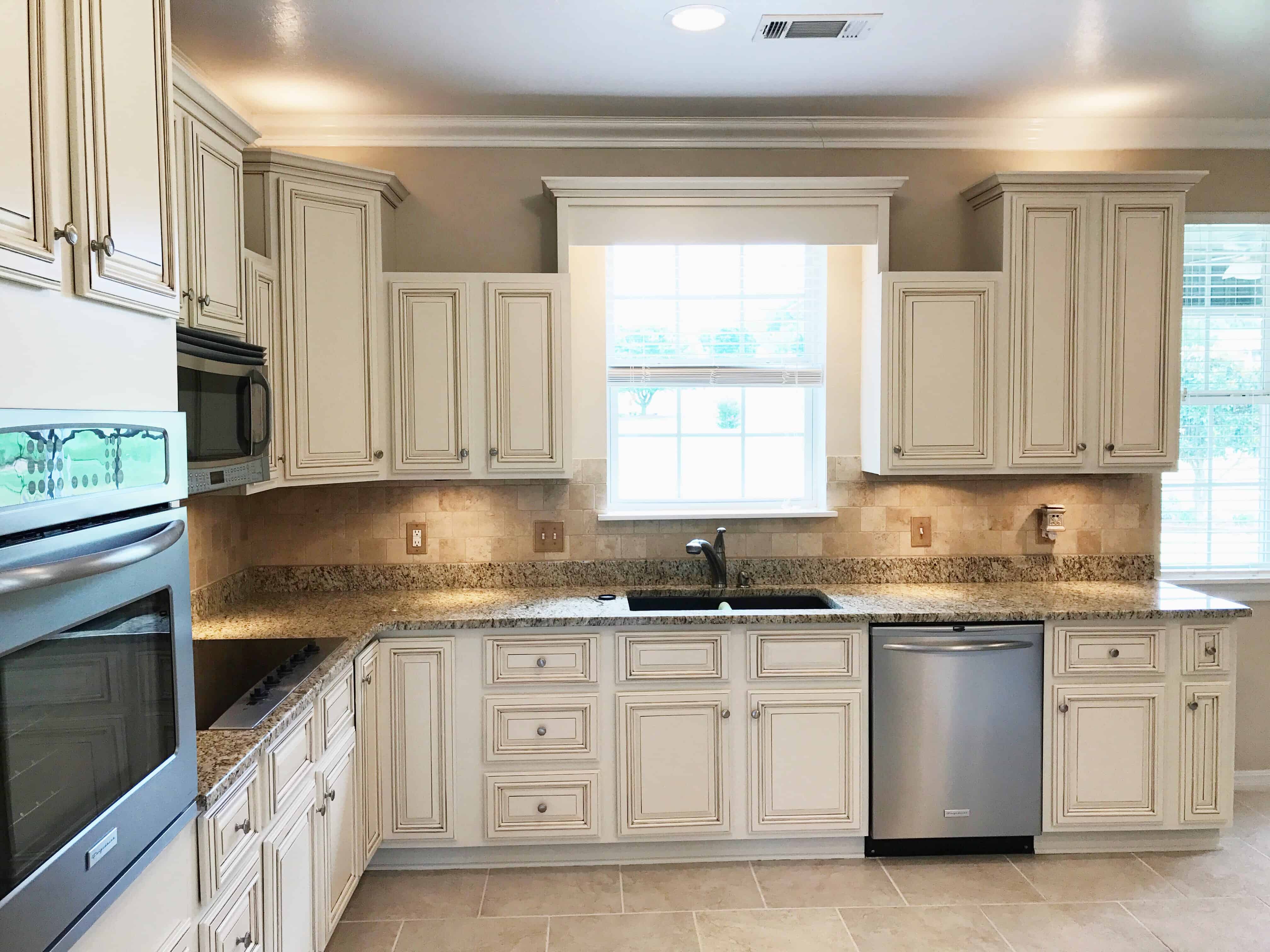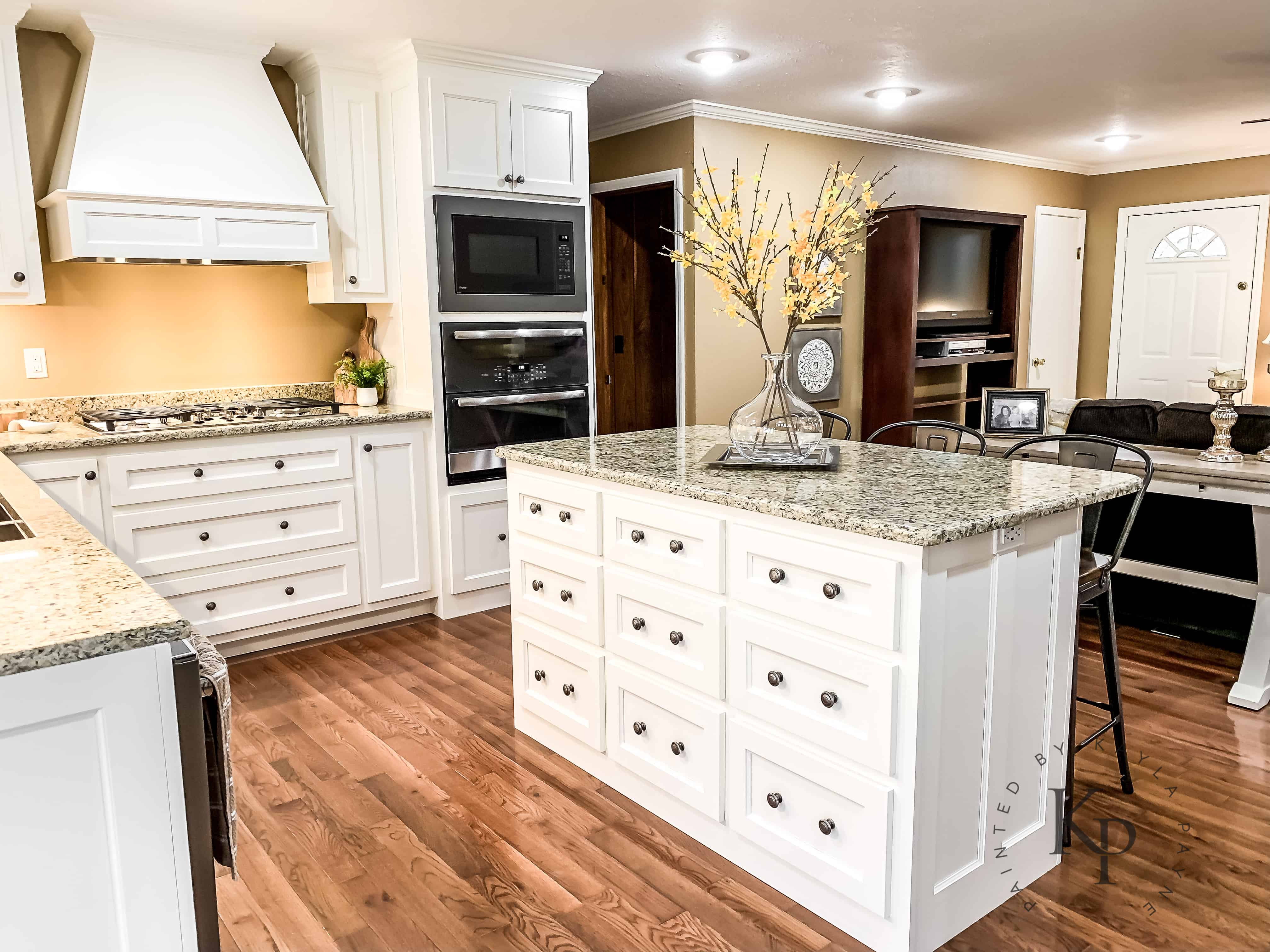Shades of White for Cabinets: Best White For Cabinets

Choosing the right shade of white for your kitchen cabinets can significantly impact the overall feel and functionality of the space. The subtle differences between various whites can dramatically alter the perceived size, brightness, and even the style of your kitchen. This section explores popular white cabinet paint colors and their effects on kitchen design.
Undertones in White Cabinet Paints
The term “white” encompasses a broad spectrum of colors, each with unique undertones that significantly affect their appearance. Bright White, Pure White, and Off-White, while all appearing white at first glance, possess distinct characteristics. Bright White, as its name suggests, has a crisp, clean feel, often leaning slightly cool with hints of blue or gray. This coolness makes it ideal for brightening smaller kitchens or those with limited natural light. Pure White strives for a true, unadulterated white, minimizing any noticeable undertones. It provides a versatile backdrop, working well in both modern and traditional settings. Off-White, on the other hand, incorporates subtle warmth, often with hints of beige, cream, or yellow. This warmth creates a cozy, inviting atmosphere, particularly suitable for larger kitchens or those with abundant natural light. The impact of these undertones can be seen in how they reflect light; Bright White tends to reflect light more intensely, while Off-White offers a softer, more diffused reflection.
Visual Impact of Warm and Cool Whites in Different Lighting
Warm white cabinets, with their beige or yellow undertones, create a comforting and inviting atmosphere. They tend to appear warmer and more yellowish in incandescent lighting, while appearing slightly less yellow under cooler fluorescent or natural light. These cabinets pair beautifully with darker countertops like granite or butcher block, creating a balanced contrast. Cool white cabinets, with their blue or gray undertones, offer a crisp, modern feel. They appear brighter and cooler under most lighting conditions, though the blue undertones may become more pronounced under cooler light sources. These cabinets complement lighter countertops like quartz or white marble, maintaining a bright and airy ambiance.
Kitchen Layouts Showcasing Different White Cabinet Shades, Best white for cabinets
The following table illustrates how different shades of white cabinets can transform the look and feel of a kitchen, depending on the choice of countertops and flooring.
| Cabinet Color | Countertop Material | Flooring | Overall Style |
|---|---|---|---|
| Bright White | White Quartz | Light Gray Porcelain Tile | Modern, Minimalist |
| Pure White | Black Granite | Dark Hardwood | Classic, Elegant |
| Off-White | Butcher Block | Light Oak Hardwood | Rustic, Farmhouse |
Practical Considerations for Choosing White Cabinets

Choosing white cabinets offers a timeless and versatile aesthetic, but the decision extends beyond mere aesthetics. Several practical factors significantly impact the longevity and maintenance of your investment. Understanding these factors ensures you select the perfect white cabinets for your home’s needs and lifestyle. This section will explore finish options, maintenance challenges, and material comparisons to guide your selection process.
White Cabinet Finishes: Semi-Gloss, Eggshell, and Satin
The sheen of your white cabinet finish significantly affects its appearance and durability. Semi-gloss finishes possess a noticeable shine, reflecting light and making imperfections less visible. This makes them a practical choice for high-traffic areas like kitchens, where minor scratches and smudges are more likely. However, the higher gloss can accentuate uneven surfaces or paint application flaws. Eggshell finishes offer a subtle sheen, providing a balance between durability and a softer look. They are less prone to showing imperfections than semi-gloss but may show fingerprints more readily. Satin finishes fall between eggshell and semi-gloss, providing a smooth, slightly reflective surface that’s relatively easy to clean. They’re a good compromise for areas that see moderate use. For high-traffic areas, semi-gloss offers superior durability and easier cleaning; for less-used spaces, eggshell or satin offer a softer, more elegant appearance.
Maintaining White Cabinets: Cleaning and Care
Maintaining the pristine appearance of white cabinets requires consistent care. Regular cleaning prevents grime buildup and preserves the finish.
- Regular Dusting: Dust your cabinets weekly with a soft, dry microfiber cloth or duster to prevent dust accumulation.
- Spot Cleaning: Address spills and stains immediately with a damp cloth and mild dish soap. Avoid harsh chemicals or abrasive cleaners that can damage the finish.
- Deep Cleaning: Perform a thorough deep clean every few months. Use a solution of warm water and mild dish soap, applying it gently with a soft sponge or cloth. Rinse thoroughly and dry with a clean microfiber cloth.
- Preventative Measures: Use cabinet liners to protect surfaces from scratches and spills. Avoid placing hot items directly on the cabinet doors or surfaces.
- Professional Cleaning: Consider professional cleaning every 1-2 years for thorough cleaning and maintenance of the finish.
Cabinet Material Comparison: Solid Wood, MDF, and Plywood
The underlying material of your cabinets significantly impacts their durability, maintenance, and cost.
| Material | Durability | Maintenance | Cost |
|---|---|---|---|
| Solid Wood | High; durable and repairable, but susceptible to warping with moisture | Moderate; requires regular cleaning and occasional refinishing | High |
| MDF (Medium-Density Fiberboard) | Moderate; susceptible to moisture damage if not properly sealed | Low to Moderate; relatively easy to clean but requires careful handling to avoid damage | Medium |
| Plywood | High; strong and stable, less prone to warping than solid wood | Low to Moderate; relatively easy to clean and maintain | Medium to High |
White Cabinets in Different Design Styles

White cabinets offer remarkable versatility, seamlessly integrating into a wide array of kitchen design styles. Their clean, neutral palette serves as a perfect backdrop, allowing other design elements to shine while maintaining a sense of spaciousness and light. The key to successfully incorporating white cabinets lies in thoughtful selection of hardware, backsplash materials, and accent colors.
White Cabinets in Farmhouse Style Kitchens
The farmhouse aesthetic emphasizes warmth, rustic charm, and a touch of vintage appeal. White cabinets are a cornerstone of this style, often paired with contrasting dark wood countertops, such as butcher block or dark stained oak. The hardware choice is crucial; consider brushed nickel or oil-rubbed bronze pulls and knobs with a slightly aged or distressed finish to enhance the rustic feel. A backsplash made of subway tiles, perhaps in a creamy white or a soft gray, complements the overall look. The overall effect is one of cozy comfort and timeless elegance.
To achieve a truly authentic farmhouse feel, incorporate natural materials like wood and stone throughout the kitchen. Mix and match textures, and don’t be afraid to embrace imperfection.
White Cabinets in Modern Minimalist Kitchens
Modern minimalist kitchens prioritize clean lines, functionality, and a sense of airy spaciousness. White cabinets are ideal for this style, contributing to the overall feeling of openness. Sleek, minimalist hardware, such as simple bar pulls in brushed nickel or matte black, is essential. A backsplash of simple, large-format tiles in a neutral color or even a plain painted wall creates a clean, uncluttered look. The absence of excessive ornamentation is key.
In a minimalist kitchen, less is more. Focus on clean lines, high-quality materials, and a carefully curated selection of accessories.
White Cabinets in Traditional Style Kitchens
Traditional kitchens evoke a sense of classic elegance and timelessness. White cabinets form the perfect base for this style, allowing for the incorporation of ornate details and richer materials. Consider using more elaborate hardware, such as antique brass or polished nickel knobs and pulls with decorative accents. A backsplash of decorative tile, perhaps with a subtle pattern or floral motif, adds visual interest without overwhelming the space. The countertops could be a luxurious material such as marble or granite.
Traditional kitchens benefit from the use of high-quality materials and a thoughtful attention to detail. Don’t be afraid to incorporate decorative elements to create a sense of warmth and elegance.
White Cabinets in Transitional Style Kitchens
Transitional kitchens blend elements of traditional and modern design, creating a space that is both elegant and contemporary. White cabinets provide a neutral canvas for this blend of styles. Hardware can be a happy medium, such as simple yet slightly decorative pulls in brushed nickel or oil-rubbed bronze. The backsplash could be a mix of materials or a combination of textures, for example, a combination of subway tiles and a stone accent.
The key to a successful transitional kitchen is to balance traditional and modern elements carefully. The result should be a space that is both stylish and functional.
Accent Colors and Textures with White Cabinets
White cabinets offer a versatile backdrop for a range of accent colors and textures. Pairing white cabinets with a warm wood island, for example, creates a striking contrast and adds visual interest. A bold accent wall in a deep teal or emerald green can inject personality and vibrancy. The incorporation of natural textures, such as woven baskets or a wooden cutting board, adds warmth and depth. Similarly, metallic accents, such as copper or brass, can add a touch of glamour.
Experiment with different color palettes and textures to create a kitchen that reflects your personal style. Don’t be afraid to mix and match different materials to add visual interest.
